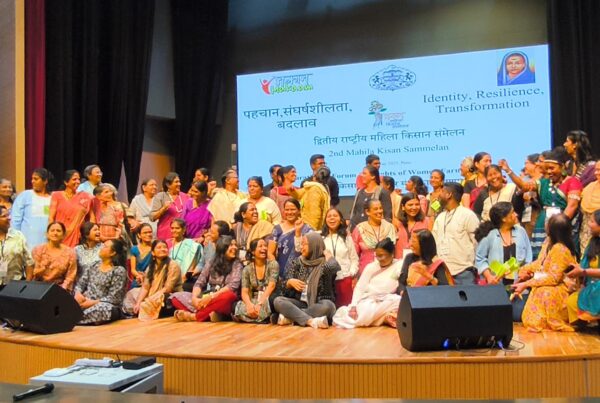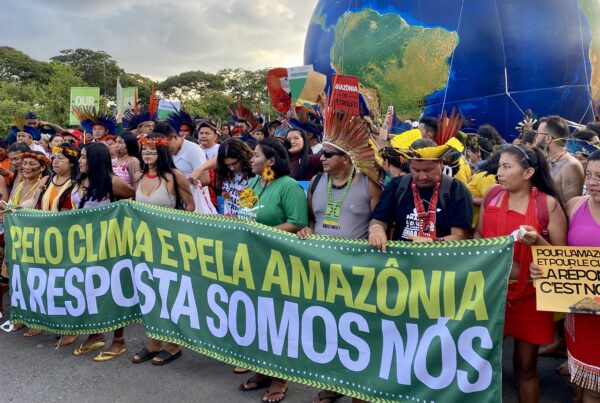By Maja Ženko and Filippo Menga
Water scarcity negatively impacts mental and physical health of the affected water users through various pathways. As shown in this study, the degradation of the home environment, which often happens through processes of dispossession, is a crucial factor threatening people’s economic, social and psychological stability
Lake Urmia in the north-west of Iran used to be the largest salt-lake in the Middle East, known for the surrounding lush wetlands, flocks of flamingos and lake mud. People believed this mud to have therapeutic properties such as relieving symptoms of rheumatic and skin diseases, attracting tourists from across the region. The surroundings of the lake were populated by small farmers, who used the fertile soil for agriculture and supplemented their income with fisheries and providing hospitality services.
The lake Urmia basin is rich in water resources, and so the past several decades of national development plans, focused on economic growth and intensive modernization, saw it as an important area for agricultural modernisation. Today 94% of all water demand in the basin comes from the agricultural sector for irrigation, with the main crops being wheat, oats, grapes and apple, the latter of the two intended mainly for export. A water-demanding agricultural development with extensive irrigation projects, however, left little water in the rivers supplying the lake. It began rapidly shrinking, losing 88% of its surface area between the years 1998 and 2014. The upstream overuse of water resources caused extreme water scarcity and environmental degradation in downstream areas, including the desiccation of the lake, salinization of underground water resources, occurrence of salt storms and the desertification of land.

The location of Lake Urmia. The two outlines represent the area of the lake in 1995 (in grey) and in September 2015 (in black). Source: Maja Ženko and Filippo Menga (2019)
When we visited the lake in 2015 and 2016 to study the social impacts of its desiccation for the local population, it was difficult to imagine that the salty desert expanding as far the eyes could see was only a few decades ago home to meadows and wildlife. During our conversations with farmers in the shade of dying trees, it soon became clear that while the experience of each family is unique, the underlying sense of sadness, loss, worry, and despair were common to all of them. The psychological impacts of the degradation of the lake proved to be so severe that it became one of our main foci of the research.
With water scarcity being one of the main challenges that humanity is facing, it is becoming increasingly recognized that it is not a function of geographical characteristics of certain areas, but rather of uneven power relations between certain geographical regions and social groups. Those groups holding more social and political power are able to appropriate disproportionate shares of water, and shape water flows according to their interests. Those key actors are usually state and capital alliances that are able to influence the formation or interpretation of state laws and policies in a way that benefits them, while using discursive power to legitimize and normalise their behaviour. In turn, the marginalized areas and communities are not only left with less water or diminished control over water resources, but also with a myriad of social, economic and health problems.
While the socio-economic impacts of the alteration of water flows have received significant attention in past decades, little research has investigated the mental health problems this creates. Indeed, water flows do not only link different geographical areas, but also shape human organization and social relations. They provide livelihoods to water-based communities and play an important part in religious and cultural ceremonies. Changes in waterflows therefore have important implications for the psychological well-being of members of the affected communities.
The environmental degradation has severely disrupted the lives of the people living in the proximity of Lake Urmia, whom we interviewed for our study. Four pathways through which manufactured water scarcity leads to mental health disorders for the population were identified: degradation of land, changes in social networks, financial pressures and physical health.

Dry lakebed of Lake Urmia. Source: Maja Ženko.
People form strong emotional bonds with their home environment, which represents an important part of their identity, sense of belonging and stability. The severe environmental degradation of the downstream area of the lake Urmia basin, exemplified by the drying of rivers and the lake, and the desertification of the land, represents a chronic environmental stressor for the local families. The farmers we interviewed expressed strong attachment to their land and indeed, farmers often perceive their land not only as means for subsistence, but also as part of their identity. As an 81-year old farmer from one of the villages described:
“I have lived here my whole life. My parents were farmers, later my wife and I took over the farm and raised our children here. We have always lived off the land and we had good lives. Then the lake started disappearing and all the vegetation dried, even the trees started to die. I look around me and all our land that used to be so green and fertile is burnt. It breaks my heart.”
All of the farmers whom we talked to mentioned the mental burden of the change in their local environment. They often described feelings of loss, sadness and helplessness, as well as avoidance behaviours, such as spending more time indoors or closing curtains, so they would not have to look at their destroyed fields. Such feelings may lead to depression and other mental health problems.
The increased presence of regulatory authority regarding water use profoundly reconfigured social relations between water users, whose water practices had previously been based on informal and traditional water rights. Due to the inability of official institutions to provide sufficient amounts of water for all of the water users, many still rely on illegally sourced water. Furthermore, in many of the study sites water from the irrigation canals was not officially managed, so the farmers had to negotiate their share of water among themselves. This led to increasing competition and conflicts for water among the farmers and a creation of a hydro-social hierarchy as well as the dissolution of once close-knit community ties. Indeed, even in small communities there can be stark differences in access to water between households. As a 50-year old woman we shared tea with explained while she was taking a break from working in the field:
“There is so little water in the canal that it never reaches our farm, the bigger farmers use all of it. There is a lot of competition and conflicts for water in the village. Before all the women would work together and we would chat and share our worries, but now we don’t socialize anymore. We all keep to ourselves.”
The loss of social capital led to feelings of injustice, chronic psychological stress, loneliness, and social isolation that were commonly described by farmers. Another factor impacting support systems, services and social capital is the out-migration from the villages due to water scarcity and the lack of economic opportunities, which left some of the studied villages almost empty.

A local farm in the study area. Source: Maja Ženko.
The lack of irrigation water and the degradation of agricultural land left farm families in difficult economic conditions, due to crop failure and higher expenses for pesticides and fertilisers. Many were left with increasing debt, and only some were able to find additional income sources such as day labour or working in the service sector. Economic problems commonly cause psychological stress, feelings of insecurity, isolation, and negative self-perception, which increases the risk of developing mental health disorders. The unpredictability of income was a cause of significant worry for the farmers, as one of the female farmers told us:
“I am afraid to sow in the spring, because I never know if there will be enough water for anything to grow. […] This field used to support seven people, but now the three of us can hardly survive with the income from it. Four family members had to move away to search for jobs in town, because life became too hard here. There is no future here.”
Along with social impacts, environmental degradation also represents a serious health threat for the population living in such areas, which is exposed to decreased quality of water, food and air. While no comprehensive study has been done on the health impacts of the degradation of Lake Urmia, it has been suggested that serious health impacts are likely. Severe health impacts have been studied in the similar setting of the Aral sea, where researchers found an increased risk of cancer, respiratory illnesses, heart and kidney diseases, anaemia, increased infant mortality, as well as waterborne diseases.
The people we talked to commonly told us that they worry about the diminishing quality of drinking water and salt storms, which threaten their health. They told us about increased rates of respiratory and eye problems from salt storms and kidney diseases in their villages, as well as increased rates of different types of cancer. For many of them this represented a cause of worry and significant stress, as most could not afford to pay for the medical expenses. Physical health problems increase the risk of developing mental health problems, and vice-versa.
Despite mental health being an integral component of health, it is often considered secondary to physical health in healthcare. Understanding the link between water scarcity and mental health is integral for reducing the burden of mental health diseases, especially given the predictions that half of the global population will be living in water-stressed areas by 2025. Policy efforts, however, should improve access to mental health services for the vulnerable population while also recognizing the underlying causes that importantly contribute to increased risk of mental health problems.
As shown in this study, an important factor threatening people’s economic, social and psychological stability is the degradation of their home environment, which often happens through processes of dispossession. In the case of Lake Urmia, shares of water between the farmers used to be based on traditional informal water rights. In the past decades with the expansion and intensification of agriculture in the upstream areas of the lake Urmia basin, and the subsequent severe water scarcity in the areas surrounding Lake Urmia, the role of official institution controlling the use of scarce water resources in the downstream areas increased under the banner of saving the lake from drying. While the water demand in the upstream areas is still increasing, the downstream farmers are experiencing increasingly restrictive access to water through governmentalization of local irrigation networks, introduction of payments for the use of irrigation water, mandatory water use permits for private wells, and a disallowance of the use of water from the rivers for irrigation purposes. Despite facing significant fines, many farmers are unable to afford accessing water through legal means, and so an illegal hydro-social territory exists parallel to a legal one. The most vulnerable farmers who have to rely on illegal water sources, however, are excluded from taking part in any governmental or non-governmental projects aimed at providing relief to small farmers, exacerbating their situation.
Territorial water scarcity and increasing marginalization of some groups of water uses have thus been created through exclusionary policies and development plans. The fear of financial penalties, a degree of tolerance towards illegal water extractions and increasing competition between farmers are believed to be the means of controlling the farmers from resistance, and as for the time of the fieldwork no collective action has been taken in any of the study sites to reclaim their rights to water.
__
Maja Ženko has a PhD in Environmental Science and technology from Institut de Ciència i Tecnologia Ambientals of the Autonomous University of Barcelona. Her main research topics include the socio-natural interactions and in particular the social impacts that the contested alterations of water flows have on the disadvantaged water users.
Filippo Menga is Associate Professor in Human Geography at the University of Reading. His current research focuses on water politics – particularly in relation to hydraulic infrastructure and water charities – and on the ontological tensions triggered by the Anthropocene. Twitter: filippomenga.
This blog post is based on the following article: Ženko M., Menga F. “Linking Water Scarcity to Mental Health: Hydro–Social Interruptions in the Lake Urmia Basin, Iran”. Water. 2019, vol. 11, num. 5
__
Cover Image: Abandoned ship on the dry lakebed of Lake Urmia. Source: Maja Ženko.







2 Comments